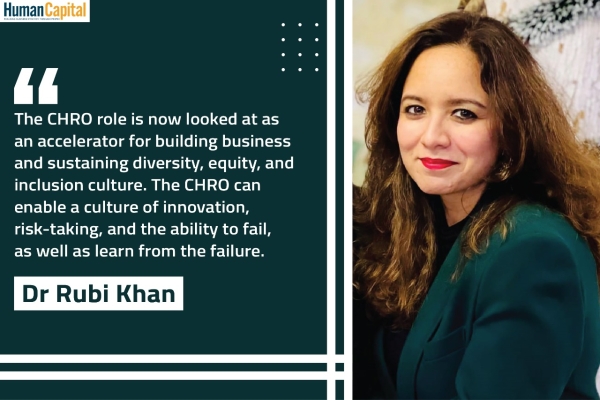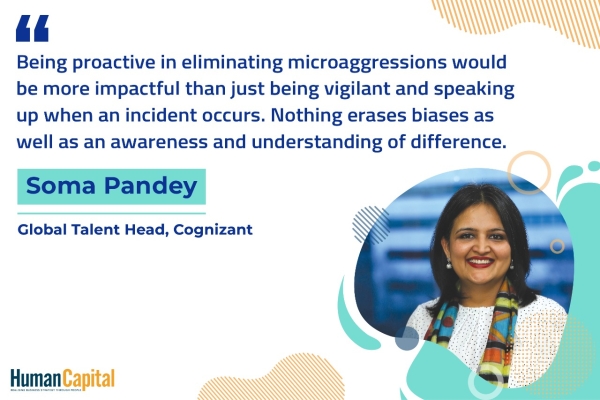By constantly embracing change, we have steadily evolved from being hunter-gatherers to farmers-herders, ultimately donning the role of the most dominant species on the planet.
More than two millennia ago, Heraclitus, the Greek philosopher had said, there is nothing permanent except change. The history of human evolution stands testimony to the continuous efforts by the human race to change its status quo. By constantly embracing change, we have steadily evolved from being hunter-gatherers to farmers-herders, ultimately donning the role of the most dominant species on the planet.
Medieval and modern history bear testimony to the manner in which the art of creating change was mastered by the human race. An incremental change gave way to disruptive change. Since the last few generations, change has become a way of life. We embraced change in the way we live, buy, work, communicate, travel, and entertain. We are presently living in a world stalked by a deadly virus, and the manner in which we adjusted to the ‘new normal’ is also apparent. Through Change we survive!
As a species, humans never went through a mass change management programme or training to traverse through all these ages. Therefore, why then are we, as employees, required to be put through Change Management Programmes? Why is there a resistance to change? And is Change Management (CM) the best way to navigate through change in an organisation? Can we find a better approach?
Given the fact that change management is a 60-year-old concept and the pace and frequency of change have undergone tremendous transformation in the last 60 years, the time is right for an overhaul of Change Management. The answers to these questions lie in Change Embracement (CE) as an approach with CM as a sub-process. So, what does it mean?
Change Management
The conventional Change Management process in the corporate world has majorly been like this:
♦ Occasionally, the top management identifies a particular change initiative as a solution to a specific problem or for the growth of the organisation.
♦ The top management foresees that stakeholders (mostly employees) would be resistant to change and tackles the resistance by convincing stakeholders about the necessity of the change initiative – typically called CM.
♦ People assigned with the task organise and implement the initiative in a coordinated and organised manner.
The brighter side of the CM process is the manner in which it is organised and coordinated with stakeholders and followed through. The flip side is that it takes a top-down approach. The management first zeroes-in on a change initiative and sells the idea to employees to minimise resistance. Thereafter, they go through the next steps of implementing the change initiative.
The top-down approach does not do much about pioneering change and is similar to a person trying to woo another into a short-term romantic relationship. In the current age where information is as pervasive as air, stakeholders can easily see through these efforts. This creates a situation where much of the organisational energy is spent on pushing people who are reluctant or sceptical about changing the status quo.
Consequently, evidence indicates that of all the change management initiatives in the corporate world, only 30 per cent see success. The prospects of success of this conventional approach in the post-corona world are yet to be understood. In order to thrive, we need to build organisations that constantly explore opportunities to change and then embrace it at an organisational level and not just at the Top Management level.
Components of Change Embracement:
Change-ready Culture: Build an organisation where stakeholders are proactive to change.
Some steps to keep in mind while trying to build a Change Embracement Culture.
♦ Build structured programmes that facilitate employee participation in identifying opportunities to create change for the better. Create programmes to promote employees initiating and owning change at all levels on a day-to-day basis. It creates a sense of partnership and ownership among employees and they start seeing the sincerity in Top Management’s drive for change.
♦ Change-readiness should be builtin as one of the core values. Continuous improvement and exploration for change should be propagated as key competencies in the process of measuring employee performance.
♦ The organisation should build an environment of trust where people know that they may lose turf at times due to the new way of doing things, they would be adequately taken care of. This dispels any doubts and kills reluctance to change and thereby eliminating the need to woo or trick employees into accepting change.
♦ The organisation needs to create success stories of people who have embraced change and made progress. This should be built to an extent where Change is looked at as an opportunity rather than as a threat.
Associates vs with Management: In organisations where Change Embracement is built as a cultural aspect, initiation of change or identification of opportunities for progressive change can come from anyone and any corner, including the Top Management. Unlike a traditional organisation where change is Topdriven, organisations with a change embracement approach create more opportunities for progressive change.
Change-agility Competency: While the cultural aspect is being built, it is also important to build change-agility as a competence at individual levels. Change-ready culture builds enthusiasm around change embracement and an environment of trust at the organisational level. Change agility is the ability to think through the impact of change till a granular level, adapt self, and help the surroundings adapt to change astutely.
Change- Management Skills: Having made the field ready for deploying change, now we go back to our good old concepts related to Change Management of organising, coordinating, informing, and implementing change. CM now takes the form of a skill that is less complex and can be drawn into a set of sequential steps that can be walked through with higher ease.
The difference is that this is now purely administrative and requires very little workaround convincing reluctant employees to change. The organisation is change-ready at a cultural level, people are competent at implementing change and hence CM is very likely to have enhanced chances of success.
Thus, we need a change in approach to change. History suggests that initiators of change thrive and those who adapt to change survive. Hence, it is a smarter move to become an organisation that explores and initiates change rather than be reluctant or averse to change.
Follow and connect with us on LinkedIn, Facebook, Instagram, Twitter for latest HR news and insights.
Are you comfortable working with dispersed colleagues?
Trending
-
SBI General Insurance Launches Digital Health Campaign
-
CredR Rolls Out 'Life Happens' Leave For Its Employees
-
Meesho Announces 30-Week Gender-Neutral Parental Leave Policy
-
Microsoft Unveils Tech Resilience Curriculum To Foster An Inclusive Future
-
60% Indian Professionals Looking For Job Change Due To COVID: Survey
-
SpringPeople And Siemens Collaborate For Digital Transformation Push
-
86% Professionals Believe Hybrid Work Is Essential For Work Life Balance: Report
-
Almost 1 In Every 3 People's Personal Life Affected Due To Work Stress
-
Meesho Rolls Out Reset And Recharge Policy For Employees
-
80% Of Talent Leaders & Academics Say Pandemic Changed Skill Needs For Youth: Report
-
Hero Electric Rolls Out 'Hero Care' Program For Employees
-
Human Capital In Collaboration With ASSOCHAM Hosts Virtual Conference
-
IKEA India, Tata STRIVE Collaborate To Create Employability And Entrepreneurship Opportunities
-
SAP India, Microsoft Launch Tech Skilling Program for Young Women
-
DXC Technology, NASSCOM Collaborate For Employability Skills Program
-
Lenskart To Hire Over 2000 Employees Across India By 2022
-
Mindtree Launches Learn-and-Earn Program
-
Tata AIA Extends 'Raksha Ka Teeka' To Its Employees
-
Swadesh Behera Is The New CPO Of Titan
-
NetConnect Global Plans To Recruit 5000 Tech Professionals In India
-
Hubhopper Plans To Hire 60% Of Indian Podcasters By 2022
-
Corporate India Needs More Women In Leadership Roles: Report
-
Aon to Invest $30 Million and Create 10,000 Apprenticeships by 2030
-
Tech Mahindra Launches ‘Gift a Career’ Initiative for Upskilling of Youth
-
40% Women Prefer Flexible Working Options in Post-COVID World: Survey
-
3 out of 4 companies believe they can effectively hire employees virtually: Report
-
Vodafone , CGI and NASSCOM Foundation launch digital skills platform
-
Odisha: Bank, postal employees to deliver cash for elderly, differently-abled persons
-
Skill India launches AI-based digital platform for "Skilled Workforce"
-
Hiring activity declines 6.73% in first quarter: Survey
-
70% startups impacted by COVID-19 pandemic
-
Bajaj Allianz Life ropes in Santanu Banerjee as CHRO
-
Over 70 Percent MSMEs look at cutting jobs to sustain businesses
-
93 Per Cent employees stressed about returning to office post-lockdown
-
Johnson & Johnson India announces family benefits for same gender partners
-
Indian firms turning friendly towards working mothers
-
Welspun India names Rajendra Mehta as new CHRO
-
Wipro partners with NASSCOM to launch Future Skills platform



Human Capital is niche media organisation for HR and Corporate. Our aim is to create an outstanding user experience for all our clients, readers, employers and employees through inspiring, industry-leading content pieces in the form of case studies, analysis, expert reports, authored articles and blogs. We cover topics such as talent acquisition, learning and development, diversity and inclusion, leadership, compensation, recruitment and many more.
Subscribe Now












































Comment